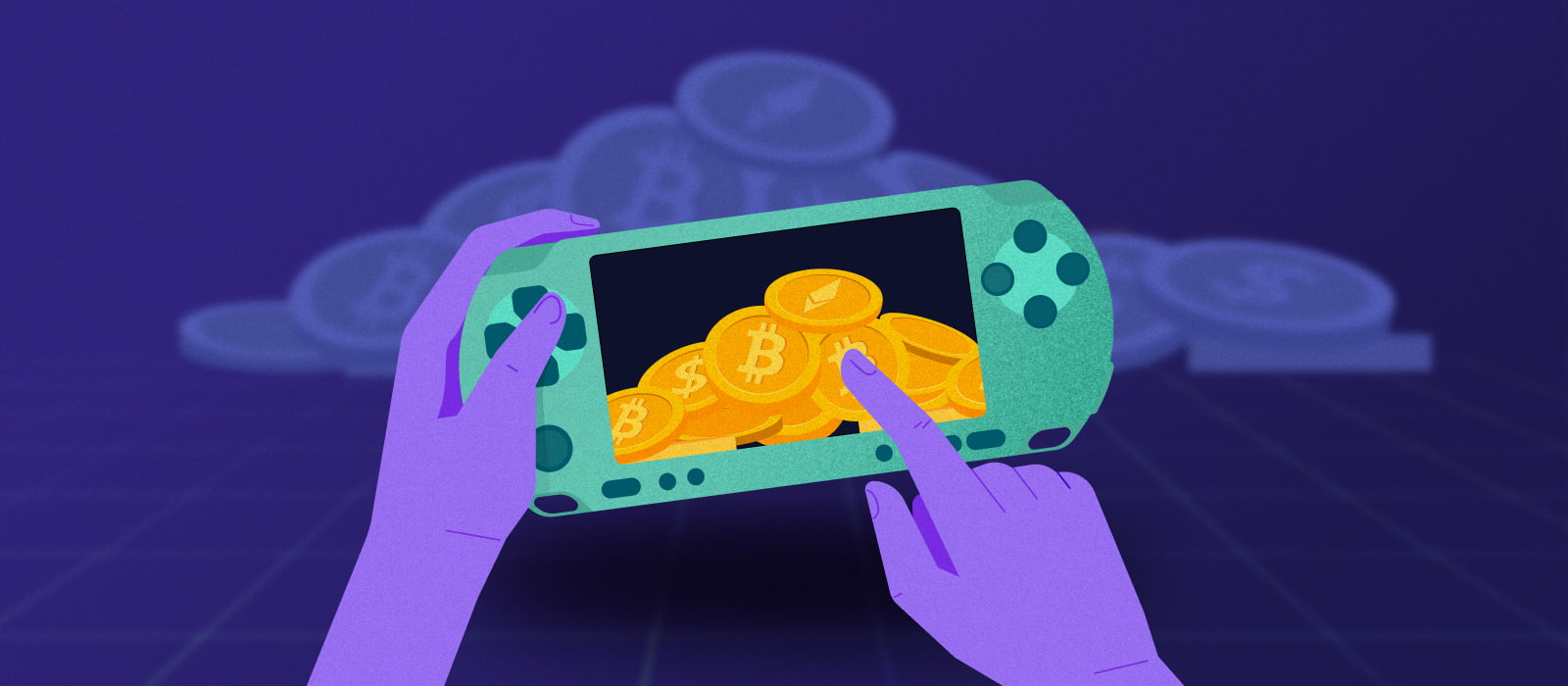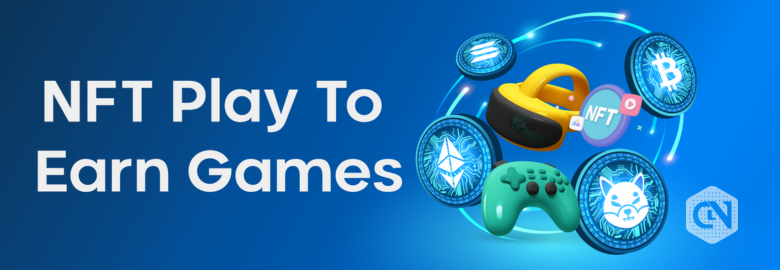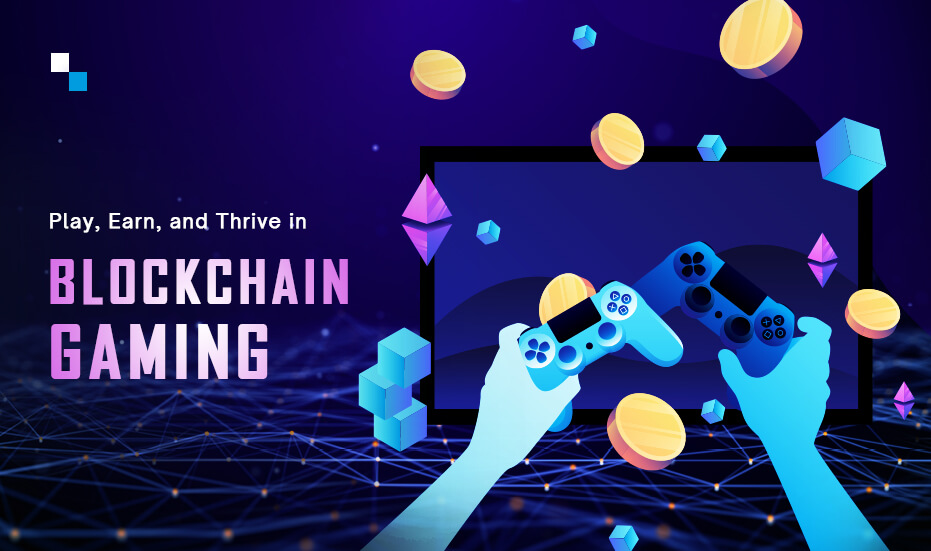In the world of cryptocurrency, play-to-earn (P2E) games have become commonplace. P2E games enable players to earn prizes just by playing and fulfilling tasks or milestones.
While the prizes from various games vary (some offering tokens, others NFTs), they all have actual value and can be exchanged for other tokens or even sold on specialized exchanges for fiat money.
You can see a list of some of the top play-to-earn games in the guide below. While some are new and might help you get started in the field, others are well-known games with active ecosystems.
What Are Play-to-Earn (P2E) Games?
With the use of the blockchain and play-to-earn (P2E) gaming mechanics, users may obtain cryptocurrency tokens by doing tasks, defeating other players in matches, or advancing through game stages. These prizes can be in the form of well-known cryptocurrencies like ETH or USDT, native cryptocurrencies like MANA from Decentraland, or NFT assets like skins, cards, characters, etc.
The idea behind P2E games is straightforward: the longer you play the game, the more likely you are to win real-world prizes, most often in the form of cryptocurrency. For example, you may rent out your virtual land in a P2E game like Decentraland to get passive money. Then there are a ton of peer-to-peer games where you may engage in combat and earn tokens. Through the game’s native cryptocurrencies, AXS and SLP, for instance, Axie Infinity allows players to earn points with actual value. Here’s a list of some of the best NFT games to help you get a general idea of the ecosystem and some of the largest initiatives in blockchain gaming.
How do play-to-earn games work?
Game designers have quickly embraced the play-to-earn concept. Numerous games, such as Gods Unchained, Splinterlands, and Axie Infinity, are becoming more and more popular. In order to fund its ecosystem and provide players access to valuable in-game tokens outside of the game, these (and other) P2E games rely significantly on blockchain technology. NFTs, decentralized markets, and cryptocurrencies—also known as digital currencies—have all contributed to making this feasible.
In a P2E game, you may essentially earn rewards for any action you perform, including accepting challenges, engaging in battle, assisting in problem-solving, and raising new species. In the game, the components take the shape of NFTs. For instance, it’s simple to create additional tokens to trade or sell on the market if you wish to breed more animals or create new avatars.
The ease with which NFTs may be converted into cryptocurrencies is by far their greatest benefit. Through exchanges, virtual currencies may be traded for real money. Since in-game transactions take the form of blockchains, it is always possible to confirm the legitimacy and ownership of digital assets.
History of GameFi and play-to-earn

A lengthy history of game monetization includes play-to-earn. Arcade games of the 1970s and 1980s required players to input a coin in order to play. Play-to-play (P2P) games are those that require a one-time cost from players in order to play them endlessly, replacing the arcade machines that formerly dominated the gaming industry with home game consoles.
But the widespread use of smartphones and Apple’s introduction of in-app purchases within free apps severely disrupted the P2P industry. As the mobile gaming industry boomed, many game producers moved from upfront fees to the so-called “freemium” model, which allows users to play a basic version of the game for free but improves their experience with in-game upgrades.
Another step in this growth is P2E, although this time it allows for the ownership of in-game goods. With the release of CryptoKitties on the Ethereum blockchain in 2017, P2E first gained popularity within the cryptocurrency community; however, a strong GameFi ecosystem didn’t emerge until around 2020.
Several of the top game companies, such as Epic Games, Ubisoft, and Nintendo, have invested in GameFi, one of the fastest-growing parts of the digital asset market.
Play-to-earn Features:
- A blockchain-based gaming genre known as “play-to-earn” (P2E) allows players to earn token-based prizes like bitcoins or NFTs.
- GameFi refers to play-to-earn games and the surrounding ecosystem as a whole.
- GameFi has the ability to integrate other blockchain and cryptocurrency components, such as DeFi or DAOs.
Advantages of Play-to-Earn (P2E) Games

One of the main features of the cryptocurrency world are play-to-earn games, which have several advantages. These consist of:
- The blockchain-based: Since blockchains are the foundation of play-to-earn games, it is safe to assume ownership of any in-game object, from cryptocurrency coins to non-fungible tokens (NFTs). In a standard online game, should any in-game collectibles be removed from the server, you run the danger of losing them. Blockchains, on the other hand, give each in-game object a unique ID, so no one can tamper with it without the owner’s knowledge.
- Make money while you play: The P2E games have the advantage of real-money earning while playing. You may trade the in-game money for other NFT collections or collectibles. You may earn cryptocurrency by selling assets on different platforms.
- Promote new gaming trends: The play-to-earn games open the door for more recent changes in the gaming industry, expanding the potential for future big initiatives. These games show us a whole new side of the player’s potential that goes beyond simple gameplay.
Top 10 Best Play-to-Earn Games with Crypto & NFT Rewards for 2023
1. Axie Infinity
Axie Infinity has captivated the gaming community. Axies are fantastical animals that players may gather, nurture, and fight in this Pokémon-inspired realm. Ownership of Axies as Non-Fungible Tokens (NFTs) has transformed players into entrepreneurs and virtual pet fanatics.
2. League of Kingdoms
League of Kingdoms gives the P2E environment a strategic component. In this smartphone game, which blends aspects of city-building and real-time strategic action, players create and oversee their own kingdoms.
3. RobotEra
Players assemble and engage in combat with robots represented by NFTs in the robotics-themed game RobotEra. Fans of both gaming and blockchain will find this game appealing because it combines ownership with strategic fighting.
4. Tamadoge
Tamadoge lets players gather and breed virtual dogs in order to cash in on the popularity of NFTs. These cute friends are NFT assets that can be raised and exchanged, resulting in a special fusion of blockchain technology with virtual pet ownership.
5. Pikamoon
With its monster gathering and combat system, Pikamoon evokes memories. Players may engage in intriguing battles as they gather Pikamoons and trade them for NFTs. This game mixes traditional gameplay with a cutting-edge ownership model based on a blockchain.
6. The Sandbox
Players may become creators thanks to the sandbox. Players may create, own, and make money from their virtual worlds using NFTs on this exclusive platform. The fusion of creativity and gaming has given players new avenues to develop their creative potential.
7. Gods Unchained
In Gods Unchained, players go on an adventure where they must gather and confront gods and other legendary monsters. These strong entities, represented as NFTs, provide players with a distinctive take on classic card battle games.
8. Blast Royale
With its action-packed survival bouts, Blast Royale gives the P2E genre a shot of adrenaline. While earning rewards from P2E games that use blockchain technology, players engage in intense combat against one another.
9. Illuvium
In the game Illuvium, players are sent to a world where they can hunt, fight, and exchange creatures called Illuvials. The NFTs that serve as these animals give the gameplay a sense of ownership and individuality, which makes every encounter exciting.
10. Splinterlands
The main features of the cryptocurrency-powered game Splinterlands are fights and prizes. In-game items may be traded for NFTs, awards can be earned, and strategic fights can be fought. The fusion of card fighting and blockchain technology results in a fascinating experience.
Conclusion
Play-to-earn games have a number of advantages, and metaverses are really using this as their standard paradigm. These games are credited with revolutionizing the concept of online gaming, taking it beyond simple play to include revenue. There are distinct rules, decentralized power, and rich but limited rewards. In light of the current discourse surrounding privacy and internet usage, the play-to-earn game represents an exciting advancement toward gaming democracy.
FAQ
1. What in gaming terms is P2E?
In a blockchain-based gaming industry, a play-to-earn (P2E) segment exists wherein players may earn token-based prizes, such as bitcoins or NFTs. Play-to-earn games and the environment in which they exist are together referred to as GameFi. GameFi has the ability to integrate other blockchain and cryptocurrency components, such as DAOs or DeFi.
2. How do pay-to-play games operate?
Through in-game actions, players can earn cryptocurrency or tokens in pay-per-ear games. These games frequently have their own native cryptocurrency or token that players may earn by completing in-game missions, challenges, or milestones. On cryptocurrency exchanges, players may then convert these tokens into actual money.
3. What drawbacks does P2E have?
The emphasis on making money in P2E games has the potential to take away from the overall gaming experience. Certain creators might prioritize the economic model over the enjoyable gaming features, which would give players a less satisfying experience.
4. What is your P2E revenue stream?
P2E games allow players to earn money by participating in gaming activities inside of blockchain-based games that give rewards in the form of in-game assets, which can be existing cryptocurrencies like Ether (ETH) or game-specific tokens like NFTs (Non-Fungible Tokens). Players acquire these digital assets through participation in the game’s ecosystem, goal achievement, and job completion. These assets may then be exchanged for real money.
5. Are games on P2E free?
Playing certain P2E games is not free. To fully engage in certain P2E games, players may need to make an initial investment or buy in-game assets. P2E games differ from other types of gaming in that players can earn rewards for their in-game actions, whether or not they initially made a financial investment. With the help of gameplay, players may earn prizes in certain pay-to-play games without having to pay anything up front.


